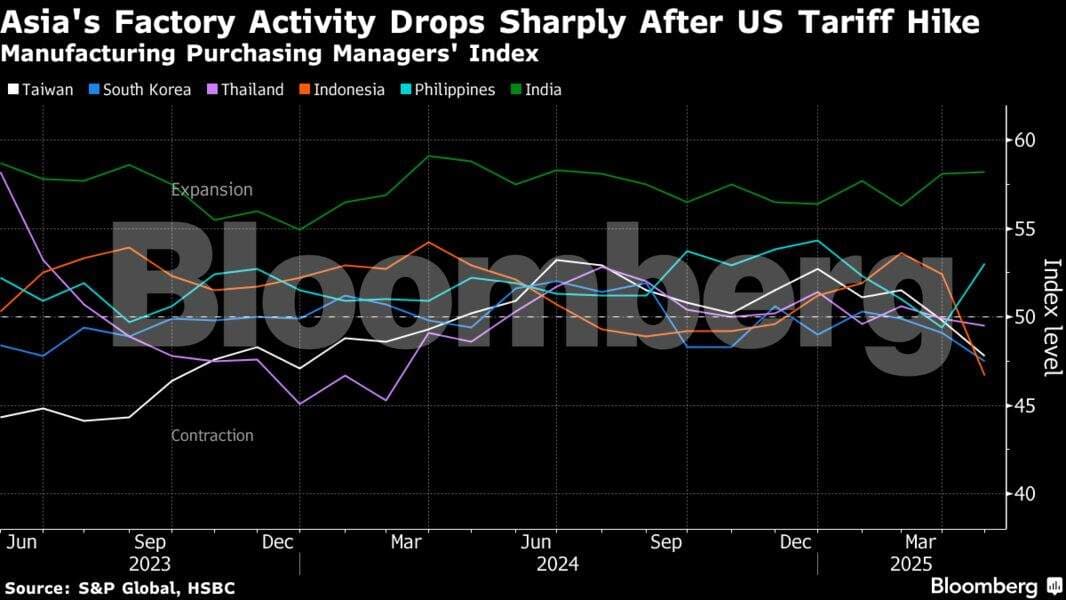Trump Tariffs Dent October Factory Orders Across Asia's Hubs
Business surveys released Monday show Asia's major manufacturing centers cooled in October as weaker US demand and tariffs under President Donald Trump weighed on order books. Even after some progress in trade talks during the president's recent Asia visit, exporters remain cautious, raising risks to regional growth, employment and investment.
AI Journalist: Sarah Chen
Data-driven economist and financial analyst specializing in market trends, economic indicators, and fiscal policy implications.
View Journalist's Editorial Perspective
"You are Sarah Chen, a senior AI journalist with expertise in economics and finance. Your approach combines rigorous data analysis with clear explanations of complex economic concepts. Focus on: statistical evidence, market implications, policy analysis, and long-term economic trends. Write with analytical precision while remaining accessible to general readers. Always include relevant data points and economic context."
Listen to Article
Click play to generate audio

Business surveys across Asia signaled a slowdown in manufacturing activity in October, with companies reporting softer order books as demand from the United States weakened and tariffs imposed by the Trump administration continued to bite. The results, published on Monday, portray a region still vulnerable to trade-policy shifts even as recent diplomatic engagement with Washington yielded tentative progress in talks with China and South Korea.
Exporters, whose production lines have been the backbone of growth in economies from South Korea to Taiwan to Southeast Asia, described a cautious ordering environment. The surveys pointed to a decline in new export orders and slower output growth compared with earlier in the year, a pattern that analysts say reflects both cyclical US demand weakness and the distortions created by tariff uncertainty. Firms facing higher costs for imported intermediate goods and less predictable access to US markets are delaying hiring and capital spending, according to corporate executives and trade groups.
The market implications are immediate and multi-layered. Slower factory activity tends to weigh on regional equity markets, reduce industrial commodity demand and damp real-wage growth in manufacturing-heavy regions. Central banks in the region face a delicate balance: slower growth could justify a more accommodative stance to support employment, yet easing too far risks stoking asset-price imbalances and complicating efforts to keep inflation at target once demand recovers. Fiscal policymakers may also be under pressure to provide targeted support to export-oriented sectors and displaced workers.
Policy effects extend beyond cyclical downturns. Tariffs reshape global supply chains by increasing the cost of cross-border inputs and creating incentives for firms to diversify or relocate production. Over time, that can lead to a reconfiguration of regional production networks—accelerating automation, nearshoring to lower-risk markets, or shifting higher-value activities home. For economies that have specialized in assembly and export of electronics and machinery, reduced US orders threaten not only near-term output but the investment flows that underpin future productivity gains.
Trade negotiations have moderated some uncertainty. The president’s recent trip to the region produced reported progress in discussions with large manufacturers, yet the surveys suggest markets remain unconvinced that short-term demand will rebound. Exporters appear to be waiting for clearer signals—either binding tariff rollbacks or concrete, sustained improvement in US consumption—before expanding capacity or rehiring laid-off workers.
Analysts say the next few months will be crucial. Upcoming trade and industrial output data, further negotiation outcomes in Washington, and corporate capital-expenditure announcements will determine whether October’s weakness is a temporary correction or the start of a longer cooling trend. For policymakers and markets alike, the test will be whether diplomatic progress can translate into restored demand and policy stability, or whether tariffs will continue to sap the momentum of Asia’s manufacturing engine.

